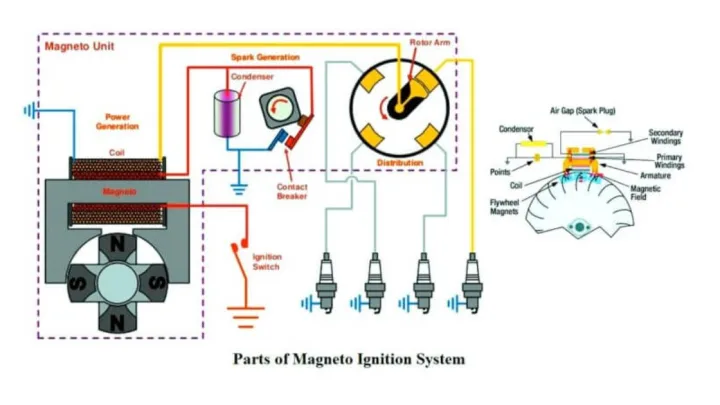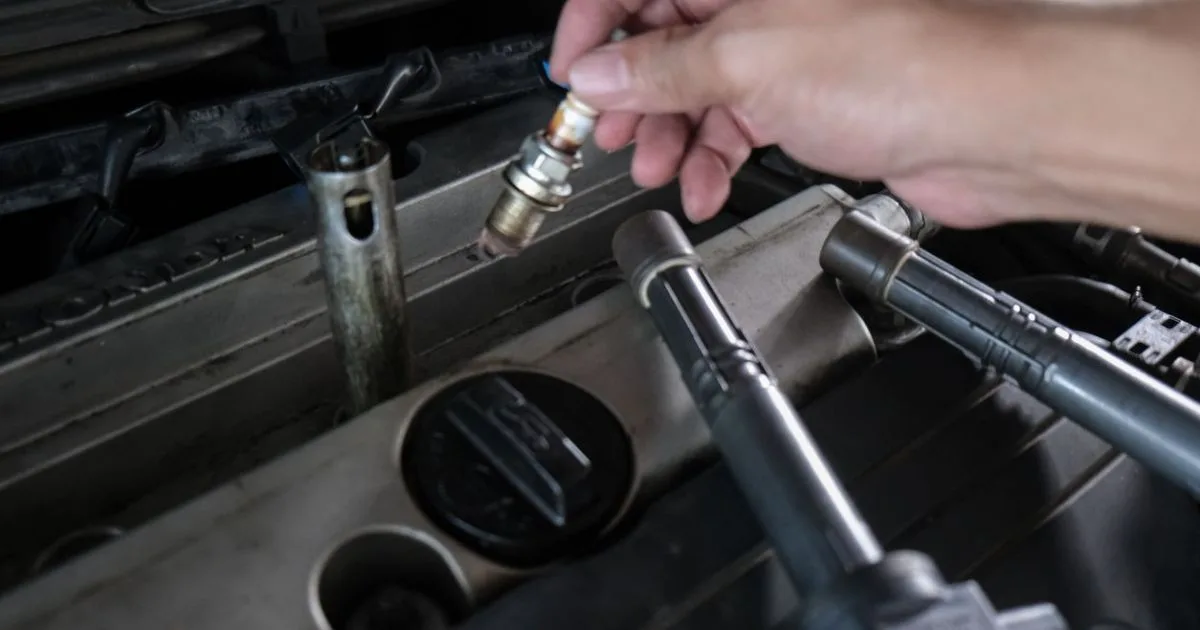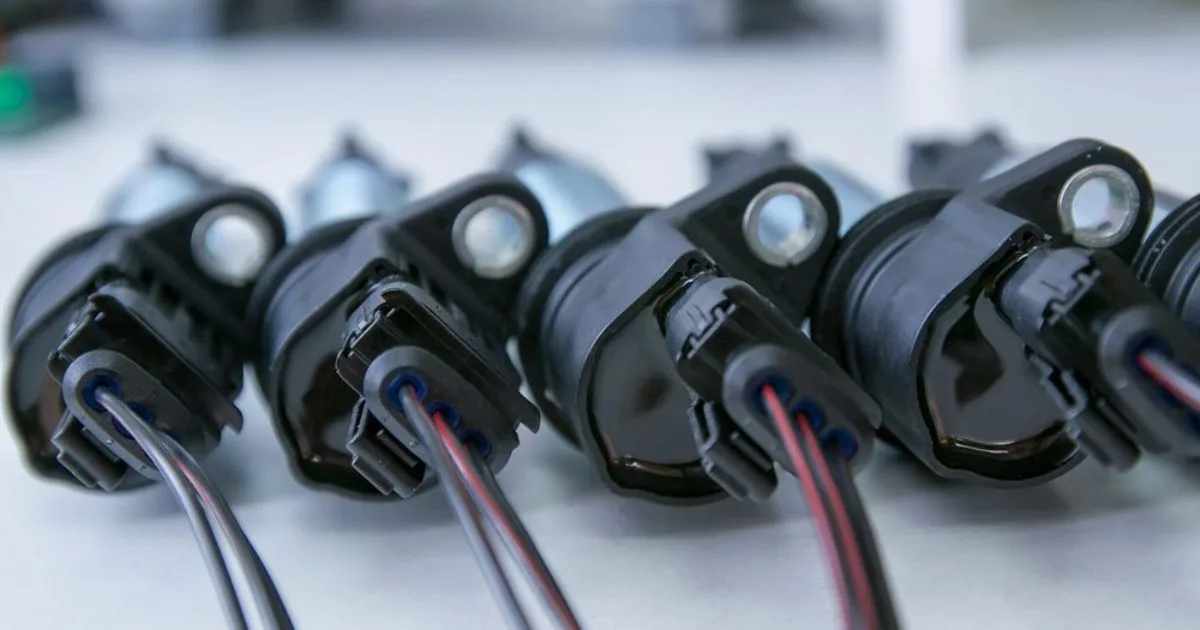
To test your magneto ignition coil, use a multimeter to measure resistance and check for continuity. Ensure accurate readings by following proper procedures.
Testing a magneto ignition coil is crucial for maintaining optimal engine performance. Faulty ignition coils can lead to engine misfires, poor fuel economy, and difficulty starting.
With a few simple tools and techniques, you can diagnose issues quickly and efficiently. This guide covers essential tips and tricks to help you accurately test your ignition coil.
By understanding how to perform these tests, you can prevent potential engine problems and ensure your vehicle runs smoothly. Whether you're a seasoned mechanic or a DIY enthusiast, these steps will help you maintain your ignition system effectively.
Introduction To Magneto Ignition Coils
The magneto ignition coil is crucial for many engines. It generates high voltage to ignite fuel. Understanding its purpose and function is key to effective testing.
Purpose And Function
A magneto ignition coil converts mechanical energy into electrical energy. This process creates a spark to ignite the fuel-air mixture in engines.
Here's a breakdown of its main components and their roles:
- Primary Coil: Generates low voltage.
- Secondary Coil: Steps up the voltage.
- Magnet: Provides magnetic field.
- Breaker Points: Interrupt current flow.
These parts work together to ensure the engine starts and runs efficiently.
Common Applications
Magneto ignition coils are used in various engines.
Here are some common applications:
| Application | Description |
|---|---|
| Small Engines | Used in lawn mowers and chainsaws. |
| Motorcycles | Found in many two-wheeler engines. |
| Aircraft | Essential for small aircraft engines. |
| Marine Engines | Used in boat engines for reliable ignition. |
Knowing where magneto ignition coils are used helps in understanding their importance. This knowledge aids in effective testing and maintenance.
 Symptoms Of A Faulty Ignition Coil
Symptoms Of A Faulty Ignition Coil
Symptoms Of A Faulty Ignition Coil
Ignition coils are crucial for your vehicle's performance. A faulty ignition coil can cause various issues. Knowing the symptoms helps in quick diagnostics.
Engine Misfires
Engine misfires are a clear sign of a faulty ignition coil. The coil fails to provide a spark, causing the engine to misfire. You may feel jerks while driving.
Here's a quick list of misfire symptoms:
- Jerking or stumbling sensation
- Power loss
- Check Engine light
Poor Fuel Efficiency
Poor fuel efficiency is another indicator. A faulty ignition coil can lead to incomplete combustion. This wastes fuel and reduces mileage.
Look out for these fuel efficiency symptoms:
- Frequent trips to the gas station
- Lower miles per gallon
- Unburned fuel smell
Pay attention to these symptoms to maintain your vehicle.
Preparation For Testing
Before testing your magneto ignition coil, prepare properly. Preparation ensures accurate results and safety. Follow these steps to get ready for testing.
Related Post
5 Reasons Spark Plug Wires May Not Be Compatible With Your Vehicle
The Importance of a Distributor in Your Car: More Than Just Spark
10 Warning Signs Your Car’S Spark Plugs Need Replacing
Expert Tips: Testing Club Car Ignition Coil Parts Like a Pro
Mastering Car Ignition Coils: A Step-By-Step Testing Guide
Necessary Tools
Gather the following tools:
- Multimeter: Measures electrical values.
- Wrench: Loosens and tightens bolts.
- Insulated Gloves: Protects your hands from electric shock.
- Screwdriver: Helps in opening and closing screws.
Safety Precautions
Safety is crucial while testing. Follow these precautions:
- Turn Off Power: Ensure no power supply to the coil.
- Wear Insulated Gloves: Protect your hands from electric shocks.
- Work in a Dry Area: Avoid wet environments to prevent accidents.
- Use Tools Properly: Handle tools with care to avoid injuries.
Visual Inspection
Visual inspection is a simple yet crucial step in testing your magneto ignition coil. By checking for visible signs of damage or wear, you can quickly identify potential issues. Let's break down the process into manageable steps.
Check For Damage
Start by examining the outer casing of the magneto ignition coil. Look for any cracks, dents, or other physical damage. These signs might indicate internal problems. Inspect the coil windings. They should be intact and not frayed. Damaged windings can affect the coil's performance.
| Part | Signs of Damage |
|---|---|
| Outer Casing | Cracks, Dents |
| Coil Windings | Frayed, Broken |
Inspect Connections
Next, focus on the connections. Ensure that all wires and terminals are secure. Loose connections can lead to poor performance or complete failure. Check for corrosion on the terminals. Corroded terminals can disrupt the electrical flow.
- Secure all wires
- Inspect terminals for corrosion
Use a multimeter to check the continuity of the connections.
This will confirm that the electrical path is complete.
- Set the multimeter to continuity mode
- Touch the probes to the terminals
- Check the reading for continuity
Using A Multimeter
Testing your magneto ignition coil with a multimeter is simple. A multimeter helps measure resistance and ensure your coil works correctly. Follow these steps to check your ignition coil.
Measuring Primary Resistance
First, set your multimeter to the ohms (Ω) setting. Locate the primary winding terminals on the coil. Usually, these are the small terminals marked with a "+" and "-". Place the multimeter probes on these terminals.
Check the reading on the multimeter. Compare it to the manufacturer's specifications for primary resistance. Most ignition coils have a primary resistance between 0.4 to 2 ohms. If the reading is outside this range, your coil may be faulty.
Measuring Secondary Resistance
Next, set the multimeter again to the ohms (Ω) setting. Find the secondary winding terminal and the coil tower. The coil tower is where the high-voltage wire connects. Place one probe on the secondary winding terminal and the other on the coil tower.
Check the reading on the multimeter. Secondary resistance usually ranges from 6,000 to 15,000 ohms. Compare the reading to the manufacturer's specifications. If the reading is too high or too low, your ignition coil might be defective.
| Test Type | Expected Resistance Range |
|---|---|
| Primary Resistance | 0.4 to 2 ohms |
| Secondary Resistance | 6,000 to 15,000 ohms |
Pro Tip: Always compare your readings to the specifications provided by the manufacturer. Each ignition coil type might have different values.
Spark Test
Testing your magneto ignition coil can be simple and effective with a spark test. This method helps you determine if your ignition coil is working correctly.
Follow the steps below to conduct a spark test accurately.
Setup Procedure
First, gather all necessary tools. You will need:
- Insulated pliers
- Spark plug tester
- Protective gloves
Next, follow these steps:
- Turn off the engine and remove the spark plug wire.
- Attach the spark plug tester to the ignition coil.
- Reconnect the spark plug wire to the tester.
- Hold the tester with insulated pliers.
- Start the engine and observe the spark.
Interpreting Results
Analyzing the spark is crucial. Here are the possible outcomes:
| Spark Condition | Interpretation |
|---|---|
| Bright blue or white spark | Coil is functioning well |
| Weak or yellow spark | Coil may be failing |
| No spark | Coil is likely defective |
If the spark is strong and bright, your coil is in good condition. If the spark is weak or non-existent, the coil needs replacement. Always wear protective gear. Safety first!
 Advanced Testing Techniques
Advanced Testing Techniques
Advanced Testing Techniques
Testing your Magneto Ignition Coil effectively ensures reliable engine performance. Advanced testing techniques help you identify hidden issues. Here, we discuss two key methods: Oscilloscope Usage and Dynamic Testing.
Oscilloscope Usage
An oscilloscope is essential for advanced ignition coil tests. It captures real-time waveforms. This helps you analyze the coil's performance under various conditions.
- Connect the oscilloscope probes to the coil's terminals.
- Start the engine or spin the flywheel.
- Observe the waveform on the oscilloscope screen.
Look for consistent and smooth wave patterns. Any irregularities indicate coil issues. Use the oscilloscope to compare with known good waveforms.
Dynamic Testing
Dynamic testing evaluates the coil's performance under actual operating conditions. This method mimics real-world scenarios.
- Set up the test environment with the engine running.
- Measure voltage and current at various RPMs.
- Record the data for analysis.
| RPM | Voltage | Current |
|---|---|---|
| 1000 | 12V | 5A |
| 3000 | 14V | 6A |
| 5000 | 16V | 7A |
Compare these readings with manufacturer specifications. Differences can signal coil performance issues. Dynamic testing provides a comprehensive view of the coil's health.
Maintenance Tips
Regular maintenance of your magneto ignition coil ensures its longevity and efficiency. Following these simple tips can help you avoid unexpected failures and keep your engine running smoothly.
Regular Inspections
Perform regular inspections to identify potential issues early. Check for any signs of wear, damage, or corrosion.
- Visual Check: Look for cracks, burns, or discoloration.
- Connection Points: Ensure all connections are tight and clean.
- Resistance Testing: Use a multimeter to check the coil's resistance. Refer to your manual for the correct resistance values.
Proper Storage
Proper storage extends the lifespan of your magneto ignition coil. Follow these guidelines to ensure optimal storage conditions:
- Dry Environment: Store the coil in a dry place to prevent moisture damage.
- Avoid Extreme Temperatures: Keep the coil away from extreme heat or cold to prevent material degradation.
- Shield from Dust: Use a protective cover to keep dust and debris away.
By following these maintenance tips, you can ensure your magneto ignition coil remains in top condition, providing reliable performance for your engine.
Frequently Asked Questions
How Do You Test A Magneto Ignition Coil?
Use a multimeter to check resistance levels. Refer to your coil's manual for correct resistance values.
What Are Signs Of A Bad Ignition Coil?
Symptoms include engine misfires, hard starts, and decreased fuel efficiency. Check for visible damage or wear.
Can A Weak Ignition Coil Cause Misfires?
Yes, a weak coil can cause engine misfires. It may fail to provide adequate spark for combustion.
How Often Should You Test Ignition Coils?
Test ignition coils every 30,000 miles or during regular maintenance checks to ensure optimal performance.
Related Post
The True Cost of Fixing Your Car’S Glow Plugs
The Ultimate Guide to Spark Plug Cable Compatibility for Your Vehicle
How to Budget for Ignition Coil Replacement: Tips And Tricks
5 Common Mistakes When Replace a Distributor Cap Could Stop Your Car
How an Car Ignition Box Works: From Key Turn to Engine Roar
Conclusion
Testing your Magneto ignition coil ensures optimal performance. Follow these tips and tricks for accurate results. Regular maintenance can prevent issues. Remember, a well-functioning ignition coil keeps your engine running smoothly. Implement these strategies to maintain your vehicle's efficiency. Keep your Magneto ignition coil in top shape with these simple steps.
Happy driving!
Disclosure
Some links may be affiliate links. That means we may earn a small commission at no extra cost to you.